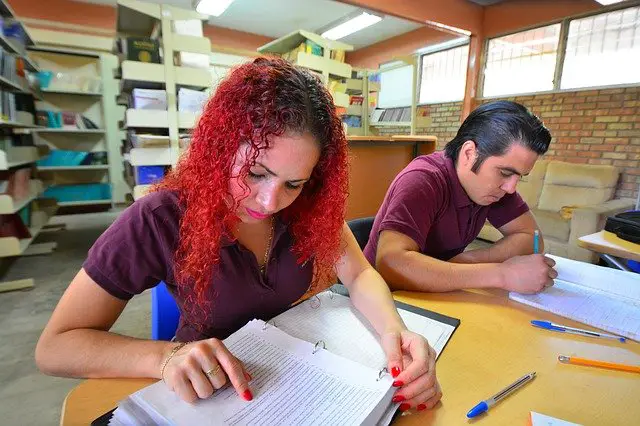Top 5 Classroom Management Strategies for High School
Classroom Management Strategies for High School
My biceps don’t bulge and my hair is blond. Intimidation is not my weapon. I am a veteran teacher with 17 years of experience. I have taught senior auto mechanics Shakespeare. In addition to high school students, I have taught middle school students who have had ADHD, students who had parents in jail and students with their own parole officers. [caption id=“attachment_130875” align=“aligncenter” width=“640”] Use these strategies to keep a calm classroom[/caption] In the real world, students come from all walks of life. They all have problems, and some do not deal well with stress or conflict. I care about my students, but the number one reason they come to school is to learn. They are tested to make sure that I taught them the Ohio English Language Arts Standards, so order must be kept in the classroom. Of course, students know the classroom rules and school rules. The boundaries are set before work begins. Not all strategies work with every student. Here are my top five classroom management strategies for high school. Keeping A Calm Classroom Strategy #5 – Keep the lesson moving. If you have a forty-five minute period, plan three different activities. Try to get them up out of their seats at least once during the class period. Those students with pent up energy will thank you for it. Strategy #4 – Don’t lecture for the whole period. Students who are actively engaged in a learning activity are generally not disrupting the class. Hands-on activities work great for vivacious classrooms. Strategy #3 – Talk to your students. If you see them in the hall, in the cafeteria or at the grocery store, ask them how they are. If you see a student in the local newspaper, congratulate them. If they do something nice, tell them that you appreciate their kindness. This lets them know that you really do care about them. Strategy #2 – When students are being disruptive by talking, poking, pulling or crumpling paper, go stand by them. This works best with boys. I have taught from the back of the room by the orneriest boys. This sends them a direct message to stop what they are doing. Most of the time they stop and get back to work. Strategy #1 – When you have stood by the student, talked to the student and kept them busy with lessons, and they still are disruptive, take them in the hallway. Ask them, “Are you OK?” It has been my experience that they crumble and tell you that they had a fight with their parents, didn’t get up on time or are having other issues. If they are defiant, send them on to the principal. In the last five years, I have sent very few kids to the principal’s office for classroom disruptions. Kids are kids. If they are not actively engaged in the lesson, they will become actively engaged in something else – disruptive behavior. Try these five strategies to keep them learning. Image by Ernesto Eslava from Pixabay
Use these strategies to keep a calm classroom[/caption] In the real world, students come from all walks of life. They all have problems, and some do not deal well with stress or conflict. I care about my students, but the number one reason they come to school is to learn. They are tested to make sure that I taught them the Ohio English Language Arts Standards, so order must be kept in the classroom. Of course, students know the classroom rules and school rules. The boundaries are set before work begins. Not all strategies work with every student. Here are my top five classroom management strategies for high school. Keeping A Calm Classroom Strategy #5 – Keep the lesson moving. If you have a forty-five minute period, plan three different activities. Try to get them up out of their seats at least once during the class period. Those students with pent up energy will thank you for it. Strategy #4 – Don’t lecture for the whole period. Students who are actively engaged in a learning activity are generally not disrupting the class. Hands-on activities work great for vivacious classrooms. Strategy #3 – Talk to your students. If you see them in the hall, in the cafeteria or at the grocery store, ask them how they are. If you see a student in the local newspaper, congratulate them. If they do something nice, tell them that you appreciate their kindness. This lets them know that you really do care about them. Strategy #2 – When students are being disruptive by talking, poking, pulling or crumpling paper, go stand by them. This works best with boys. I have taught from the back of the room by the orneriest boys. This sends them a direct message to stop what they are doing. Most of the time they stop and get back to work. Strategy #1 – When you have stood by the student, talked to the student and kept them busy with lessons, and they still are disruptive, take them in the hallway. Ask them, “Are you OK?” It has been my experience that they crumble and tell you that they had a fight with their parents, didn’t get up on time or are having other issues. If they are defiant, send them on to the principal. In the last five years, I have sent very few kids to the principal’s office for classroom disruptions. Kids are kids. If they are not actively engaged in the lesson, they will become actively engaged in something else – disruptive behavior. Try these five strategies to keep them learning. Image by Ernesto Eslava from Pixabay
This post is part of the series: Classroom Management Tips
These articles all center on ways to help a teacher develop classroom management skills. Tips range from behavior management to management of work and parents.
